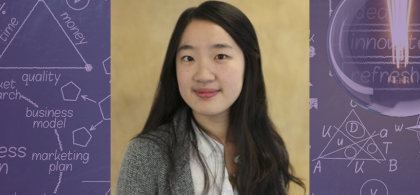
Environmental innovations challenged by their own uses: the example of bioplastics
Published on 07/06/2021
Based on what criteria can we be certain that an innovation is environmentally beneficial? When will it reduce the consumption of resources? When does it claim that it will limit our impact on the earth? Nicolas Béfort, director of the NEOMA BS Chair in Bioeconomy and Sustainable Development tells us that it is not so easy to determine.
Nicolas Béfort, director of the NEOMA BS Chair in Bioeconomy and Sustainable Development, tells us that it is not so easy to determine. In the article The promises of drop-in vs. functional innovations: The case of bioplastics, published in Ecological Economics, he offers a new point of view.
Environmental innovations are full of promises. But once the consumers get their hands on them, do they always have positive effects for the planet? Is that a crazy question? Not really. As part of the ecological transition policy, public authorities need to choose the most effective technologies.
According to what criteria are their investments directed? Nicolas Béfort, director of the NEOMA BS Chair in Bioeconomy, looked into this issue. Who determines if an innovation is sustainable or not? To illustrate his point, he uses the history of the plastic cup and bioplastics. Here’s a look back at his study.
The plastic cup had its heyday at our picnics in parks and at festivals or any similar event. We sometimes doubled them up for hot drinks, and once we used them, we threw them away. We now know the problem: plastic is produced from petroleum and degrades very slowly. Polylactic acid, or PLA, has has existed since the thirties and is produced from the biomass raw material, cornstarch. The resource is renewable, inexpensive and easily accessible. For the past several decades, the medical field has used it to make hip prosthetics and sutures.
In the eighties, PLA returned to the centre stage. A cheap biodegradable material was needed to make disposable plates. Attempts were made, except the biotechnologies were not up fully applicable yet. More research was needed, and with it additional funding. Production costs increased. And for the plastic cup, PLA could not keep all of its promises. It melted when heat was applied to it (goodbye hot coffee!) and it broke down very slowly.
Nicolas Béfort emphasises that a “product has intrinsic features. For example, it is biodegradable or water resistant. But it also has expected features. With PLA, we hoped that the plastic would retain liquid. It must have both qualities to succeed.” That’s the downfall of PLA, at least for the moment.
The rebound effect (Jevons Paradox)
An innovation, whether it is environmental or not, always follows the same cycle. “At the start, it is full of promise, and the people who invent it develop legitimisation arguments,” Nicolas Béfort explains. “They claim that their technology will solve a problem—in this case, an ecological problem. PLA is supposed to end the overproduction of plastic material.”
Then the innovation faces its own use. This is where the rebound effect kicks in. It’s what happens when, for example, low-fuel consumption cars are put on the road. We think that we are protecting the atmosphere. But drivers start driving twice as much because it’s cheaper. The environmental benefit ends up being cancelled out.
In the case of biodegradable plastic cups, it is the same story. We continue to use resources, biomass is rarer than petroleum, and we produce objects with a limited social function. Single-use items, they end up in the bin. Yes, but they are biodegradable!
It’s still not as simple as that. The waste material can only be properly processed in industrial conditions, which means consumers need to sort their rubbish and there needs to be the technical ability to recycle it. China is set up to do this, so PLA is shipped to the other side of the world. But now, the country has started to refuse accepting these shipments. In these conditions, PLA cups are environmentally nonsensical.
Drop-in innovation versus functional innovation
For Nicolas Béfort, bioplastics are an example of a type of innovation that he calls “drop-in.” Like biofuel or hydrogen, we replace one technology with another, continue to consume resources, continue to produce, to drive, to throw out plastic cups. For the director of the Chair in Bioeconomy, a real environmental innovation must have a functional innovation. It must take us out of the production-driven paradigm. “What counts in defining a beneficial environmental innovation is how the technology is used.” Also what is the reason for continuing to produce single-use cups, even when they are biodegradable, instead of simply creating cups made of durable plastic? “The transition’s policies need to encourage function innovations, meaning those that willingly break away from the production-driven paradigm, because the problem is overproduction.”



